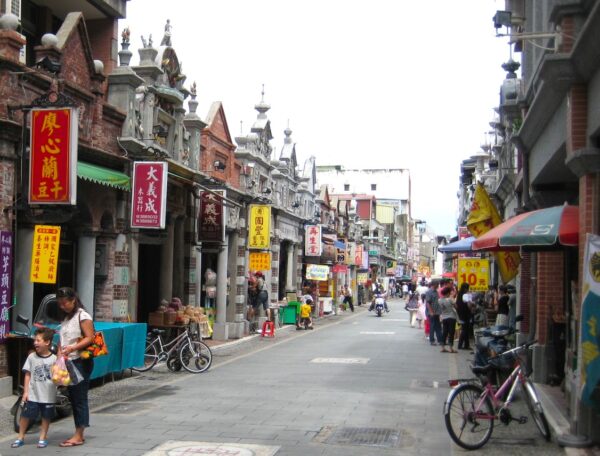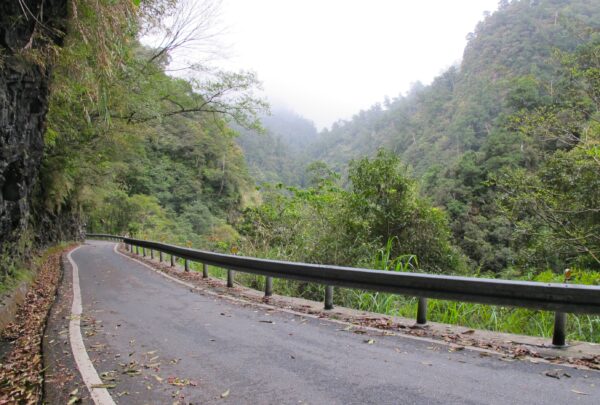
Some are very straightforward. Taipei, meaning ‘North Taiwan,’ and Tainan, translating to ‘South Taiwan,’ are geographical references. Roughly halfway between the current capital and the former capital lies Taichung, the name of which signifies ‘Central Taiwan.’
Many names have indigenous language roots. Wanhua — Taipei’s oldest district — bears a toponym chosen by the Japanese colonial authorities during the 50 years they ruled the island. When pronounced in standard Japanese, it closely resembles the name used by the local inhabitants, Mangka, meaning ‘canoe’. This unusual label originated from an Austronesian indigenous term, because tribesmen would paddle their boats downstream to exchange forest produce from the interior with goods they couldn’t make themselves, such as iron needles.
Wulai, an idyllic mountainous district outside Taipei, translates to ‘hot and noxious’ in the language of the Atayal tribe, aptly describing the sulphurous hot springs which draw tourists to the area year-round.
In Taiwan’s history, rivers played a crucial role in transportation. Daxi, meaning ‘Big River,’ was a vital transshipment point for commodities such as rice, tea, and timber. While the waterway at Daxi is no longer navigable due to a dam upstream, the town’s old quarter (pictured above) retains its historic charm. Century-old Baroque-style merchant houses reflect Greek, Roman, and Taiwanese influences, making for a highly photogenic urban quarter. For travellers enjoying one of our Taiwan private tours, it serves as a good final-day stop en route to the nearby international airport.
Animal references also feature in place names. Guishan, ‘Turtle Mountain,’ is less than 20 km from central Taipei. Its name is derived from a hill shaped like a turtle, not due to a large turtle population. Guishan Island, visible from Taiwan’s northeast coast, bears an undisputable resemblance to a turtle.
Regrettably, some vivid place names have been replaced by mundane alternatives. For instance, Taoyuan, now a major municipality housing Taiwan’s principal international airport, originally meant ‘Peach Garden.’ Over 200 years ago, settlers in the region named it Humaozhuang, signifying ‘the terrace covered by plants with leaves as sharp as tigers’ teeth.’ One of the region’s highlights is the North Cross-Island Highway, pictured here. This scenic mountain route connects Taoyuan with Yilan.
The Allure of Taiwan’s Place Names in a Guided Tour
For those keen on exploring the rich history of Taiwan, Life of Taiwan offers an array of meticulously crafted tours of Taiwan to cater to the needs of English-speaking and European visitors. Whether you seek luxury tours or family-oriented adventures, we invite you to reach out and embark on a captivating journey through Taiwan.

